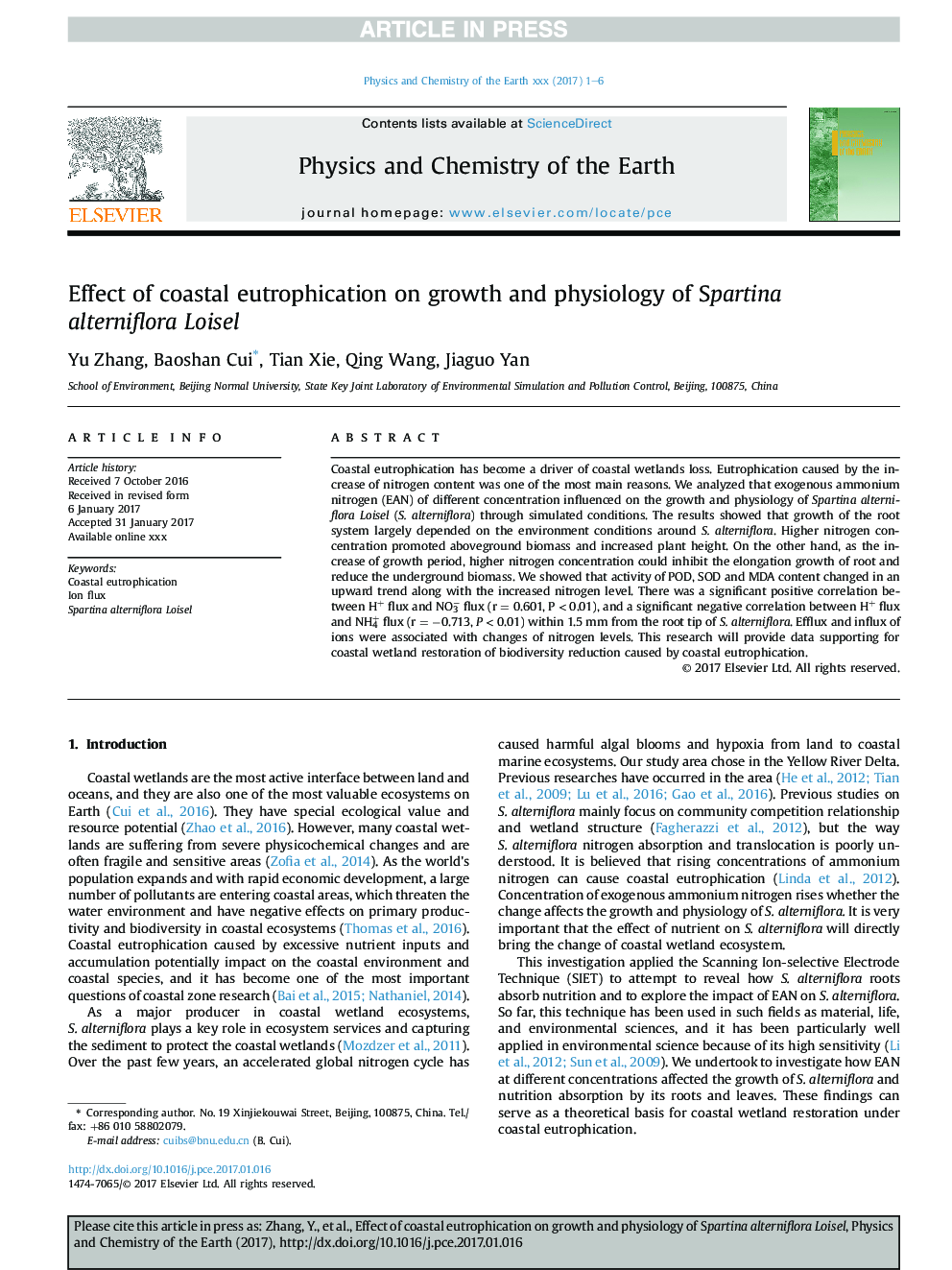| Article ID | Journal | Published Year | Pages | File Type |
|---|---|---|---|---|
| 8912399 | Physics and Chemistry of the Earth, Parts A/B/C | 2018 | 6 Pages |
Abstract
Coastal eutrophication has become a driver of coastal wetlands loss. Eutrophication caused by the increase of nitrogen content was one of the most main reasons. We analyzed that exogenous ammonium nitrogen (EAN) of different concentration influenced on the growth and physiology of Spartina alterniflora Loisel (S. alterniflora) through simulated conditions. The results showed that growth of the root system largely depended on the environment conditions around S. alterniflora. Higher nitrogen concentration promoted aboveground biomass and increased plant height. On the other hand, as the increase of growth period, higher nitrogen concentration could inhibit the elongation growth of root and reduce the underground biomass. We showed that activity of POD, SOD and MDA content changed in an upward trend along with the increased nitrogen level. There was a significant positive correlation between H+ flux and NO3â flux (r = 0.601, P < 0.01), and a significant negative correlation between H+ flux and NH4+ flux (r = â0.713, P < 0.01) within 1.5 mm from the root tip of S. alterniflora. Efflux and influx of ions were associated with changes of nitrogen levels. This research will provide data supporting for coastal wetland restoration of biodiversity reduction caused by coastal eutrophication.
Keywords
Related Topics
Physical Sciences and Engineering
Earth and Planetary Sciences
Geochemistry and Petrology
Authors
Yu Zhang, Baoshan Cui, Tian Xie, Qing Wang, Jiaguo Yan,
